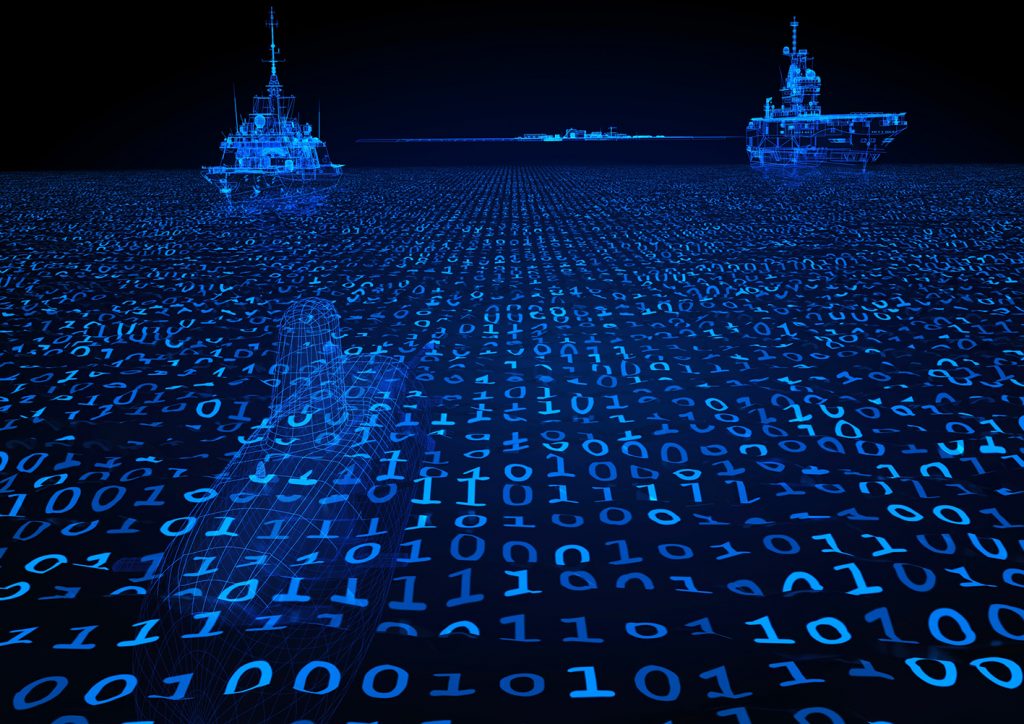For DCNS, the future of vessels is digital
DCNS presents its vision of the vessel of the future at the Euronaval Exhibition from 17 to 21 October in Paris-Le Bourget. The central challenges for naval architects: winning the time battle by ensuring maximum protection against cyber-threats. From design to setting to work by the crew and as an integrator and system engineering leader, DCNS delivers a global response: vessel digitalisation.
Vessel design and production digitalisation
For DCNS, the vessel of the future starts from the full industrial site right to the individual work station, in ‘the factory of the future’. It is a flexible and digital environment where production systems modelling, simulation and optimization solutions and automated manufacturing and control processes are developed. To physically support an operator in her/his duty, DCNS develops the use of “cobotics”, collaborative robotics, making it easier for an operator to carry out notably handling, welding or grinding tasks. DCNS also develops operator cognitive assistance in order to enhance work stations ergonomics.
The digital system par excellence, the combat vessel, with a multi-decade life-cycle, is increasingly intelligent, increasingly automated and interconnected in a constantly-evolving environment. Through the digitalisation of the vessel and its naval solutions, DCNS combines versatility, rapidity and the securing of its products at the service of its client navies.
Greater intuitiveness and automation
With the growing sophistication of combat systems and the explosion in the volume of multi-source information flows gathered from the marine environment, operational units and land-based command centres, navies must take the right decision at the right time and thus win the time battle. Part of this battle is the development of operator stations equipped with ergonomic and easy-to-use man-machine interfaces, greater automation and more intuitive control of systems, suited to the increasingly collaborative needs.
Within the Ops Room and the Control Room of a frigate or submarine of the future, DCNS not only integrates a tactile console, virtual assistant and expert systems but also connected objects based on algorithms whose power allows a better analysis of the situation and facilitated decision support.
Improved maintainability and upgradeability of on-board systems
DCNS has developed the Access (Afloat Common Computerized and Evolutive Secured Systems) project, an on-board data centre allowing the grouping of data systems in powerful, upgradeable, cyber-secured and maintainable computing centres. Designed to improve vessel operations and through-life support, this system facilitates the management of software and hardware obsolescence throughout the vessel’s lifetime.
Thanks to ships digitalisation, which allows a fuller processing of data, DCNS works on optimising maintenance cycles and over a better anticipation of preventive or corrective servicing (statistical analysis, trends analysis, low signals analysis, correlation between several systems or several ships or installations of similar types, …).
Along with this optimisation of cycles, DCNS is able to implement more frequent ship modernisation, without having to wait ships mid-life refurbishment, as well as offering all new capabilities (sensors, combat system adaptations, cybersecurity – integrity checks, drones…). These achievements need to be extended and facilitated, within Navies operational constraints.
Strengthening the vessel’s protection against cyber-threats
In the face of a newly emerging warfare domain, that of cyber-defence, the armed vessel of tomorrow must manage both the opening of data access and the protection of its systems. DCNS takes into account the cyber-security challenges over the vessel’s entire life-cycle right from its design phase. The Group is now developing a system for defensive IT warfare and installation resilience to provide its clients with a continuous capacity to operate and fight with high-performance and secure resources while under the threat of a cyber-attack.

